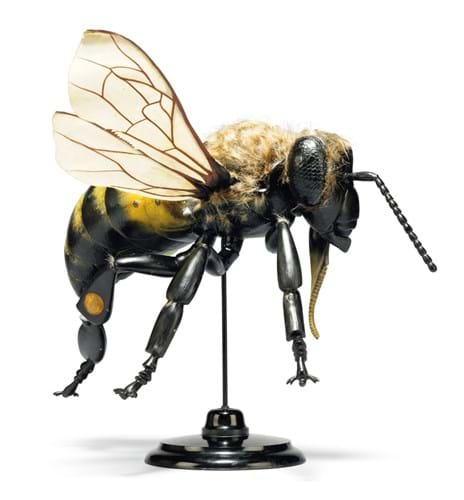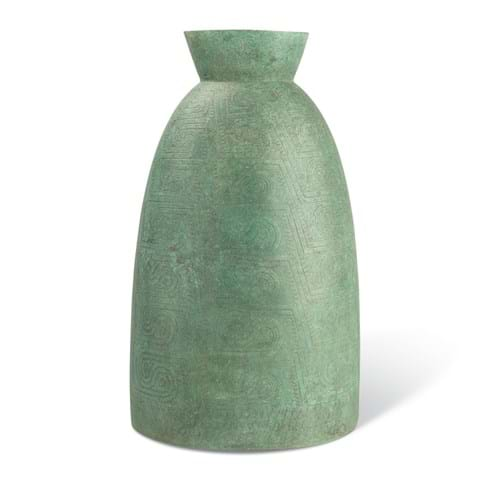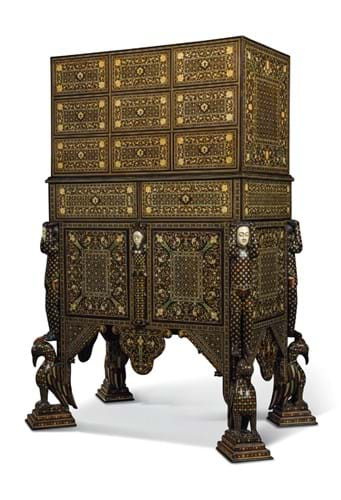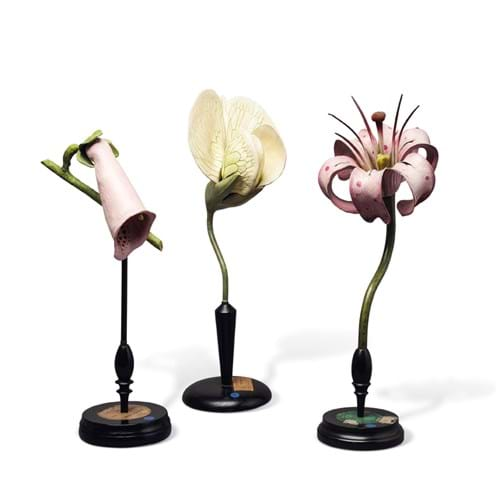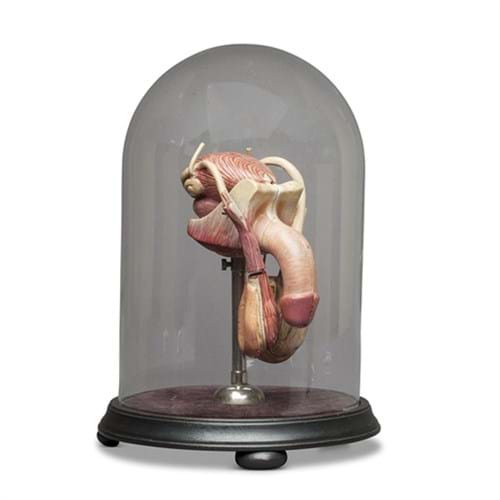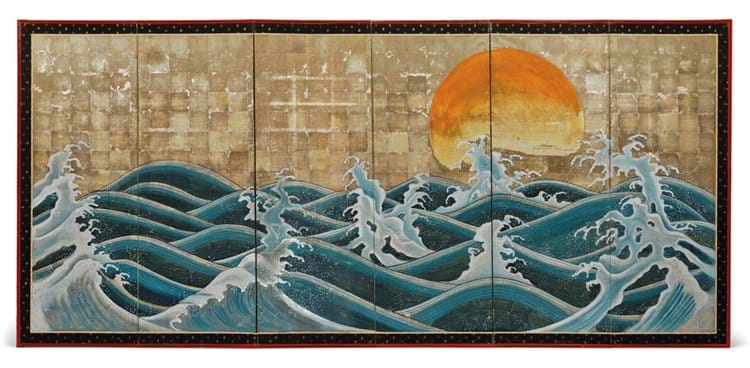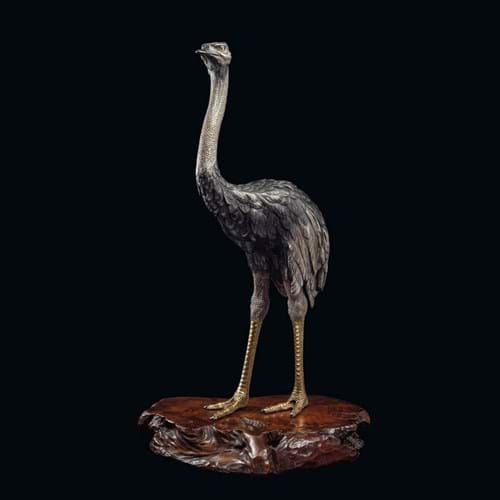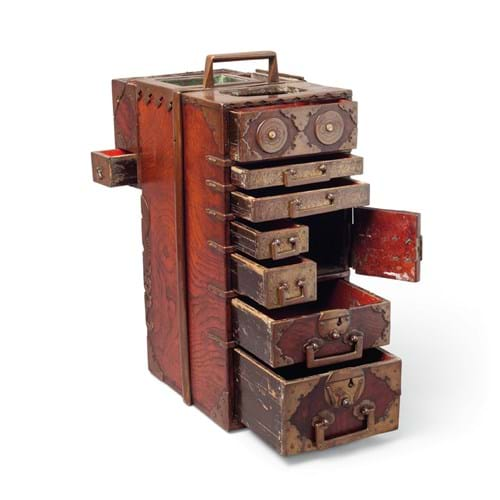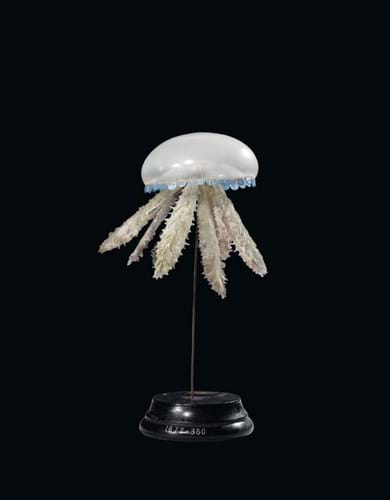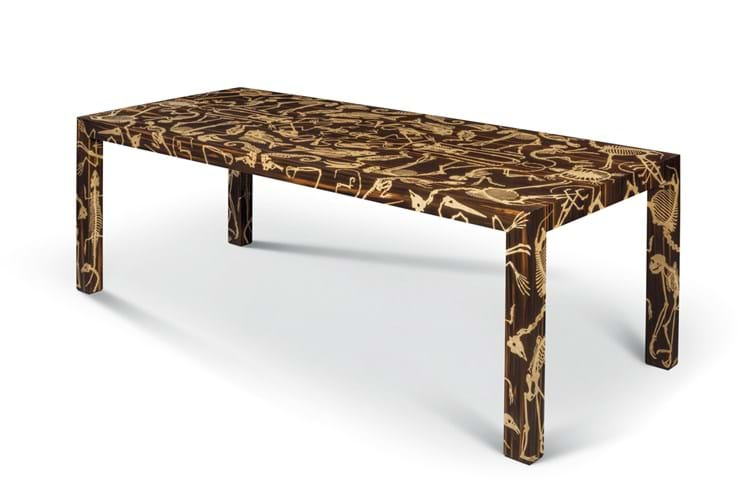With bidders turning up in the room and logging in to buy online from as far afield as New York, Hong Kong and Australia, the auction had a sell through rate of 84% by lot and 93% by value. The sale on January 30 raised a total of £1.36m including buyer’s premium.
Below is a look at some of the standout lots from the day.
Cambodian ceremonial bell
A large bronze Cambodian ceremonial bell, 23in (58cm) high, from the Southeast Asian Bronze age came top of the sale, hammered down for £100,000 over its £40,000 high estimate. Made in the Battambang province sometime between the 2nd century BC and 2nd century AD, it features overall decoration with geometric scrolls in low relief. A similar example of almost identical height is in the British Museum and is known as the Klang Bell.
Indo-Portuguese cabinet-on-stand
The highest estimated lot and second on the day was this late 17th century Indo-Portuguese ivory-inlaid Indian-rosewood and padouk cabinet-on-stand. It featured a royal provenance as it was once owned by Queen Maria de Gloria of Portugal (1819-53). Etched and stained ivory inlay with figures of naginas to each corner and lion heads, it also featured frontal human faces appeared on each corner and in the middle. It was hammered down to a bidder in the room for a low estimate £70,000.
East German model of a bumble bee
A number of didactic models, representing anything from flowers to jellyfish were included in the sale. This papier-mâché bumble bee was one of the most spectacular, making more than twice its low estimate when it was hammered down for £8000. Seen in a normal view on one side, the reverse shows the interior of the insect labelled with numerals. It was believed to have been made in East Germany in the mid-20th century.
German papier-mâché flowers
A lot including a foxglove, garden pea and martagon lily by Robert and Reinhold Brendel were among the best performing in a series of didactic botanical models. They made double their high estimate with a hammer price of £12,000.
Papier-mâché anatomical model
The appearance of this English papier-mâché anatomical didactic model of the male reproductive organs gave rise to some titters around the saleroom. Auctioneer Nick Martineau, who was on the rostrum, described it as “a fabulous specimen, one to be much admired”.
It is attributed to Adam Rouilly, a company founded in Fitzrovia in 2019 that supplied teaching aids to all the London teaching hospitals and medical schools in the 1920s and continues to produce them today. It was knocked down for £4200 over a high estimate of £3000.
Japanese six-fold screen
A variety of Japanese Meiji Period lots drew lively attention throughout the auction. Here is a sample of three very different Meiji lots that performed well. First was this Japanese gilt and polychrome-decorated six-fold screen from the late 19th-early 20th century. It was catalogued as a celebration of Japanese culture, since the sun is central to the country’s flag and tradition. It also harkens back to the earlier art form of rough sea screens which were popular in Japan from the 16th century, influencing Hokusai’s Great Wave off Kanagawa. It drew rapid bidding making a final hammer price of £17,000.
Japanese patinated-bronze ostrich
Later, this patinated-bronze model of an ostrich, signed Masatsune Chu, ended up as one of the top lots of the day. It soared over its high estimate of £15,000 to be knocked down for £38,000. Cast in bronze with gilding, silvering and shakudo patination, it is similar to examples in the Dr Nasser D Khalili Collection. It was offered on a wood base and measured 2ft 9in (84cm) high.
Japanese calligrapher’s compendium
Another Meiji period lot that performed well, if at a lower level, was this Japanese brass-mounted calligrapher’s compendium made of zelkova wood. Measuring 16in (40cm) high, it was made in the 19th century and was hammered down for £2000 over its £1200 upper estimate.
Howard Hodgkin’s sandstone Mughal panel
Among the top lots was this 17th century Mughal red sandstone panel. The decoration is referred to as a chini kana, or ‘china room’, delicate, stylised bottles and vases placed in niches. This example had a provenance back to the collection of Howard Hodgkin, which was auctioned off at Sotheby’s in 2017. This one still held appeal and was knocked down to a bidder in the room for a mid-estimate £26,000.
Glass model of a jellyfish
This glass model of a Polyclonia frondosa with its tentacles in swimming position was one of three in the sale by produced by Leopold Blaschka, c.1877. Blaschka was a Czech jeweller who worked in Dresden who indulged his passion for natural history with the creation of glass models of plants and sea creatures. The soft bodies of jellyfish are difficult to preserve and these glass models, which depict them with their natural colours, were highly prized by natural history museums of the late 19th century.
The three examples at Christie’s had been in the collection of London’s Science Museum and were deaccessioned in 1925-27. This model was knocked down for £12,000, slightly under its lower estimate.
Table from the ‘Perished Collection’
Produced by Job Smeets and Nynke Tynagel, founders of Studio Job, this 2006 table was one of three pieces from the ‘Perished Collection’ to go under the hammer at this sale. It came top in the trio, making a hammer price of £68,000. It was one of an edition of six in Macassar ebony with laser-cut bird’s eye maple marquetry.


